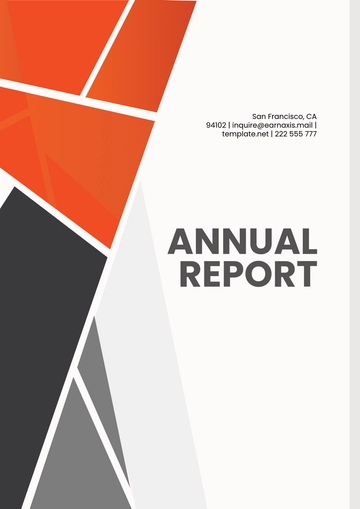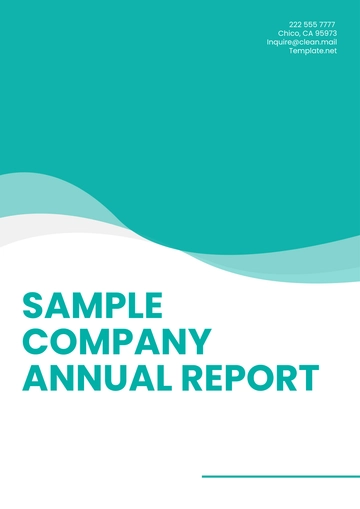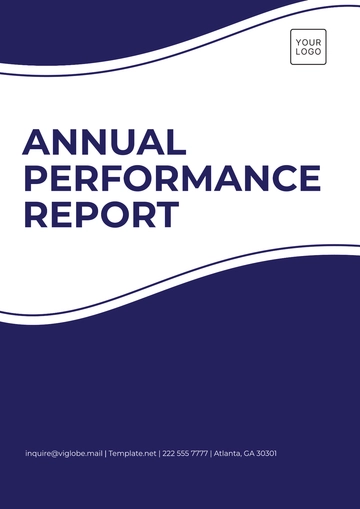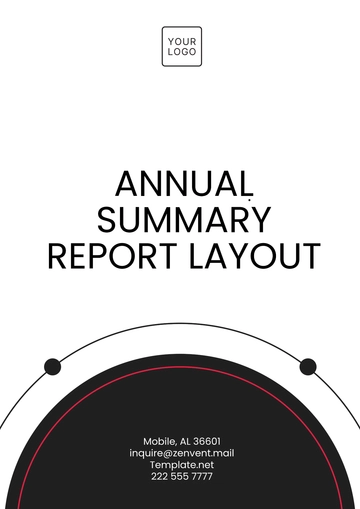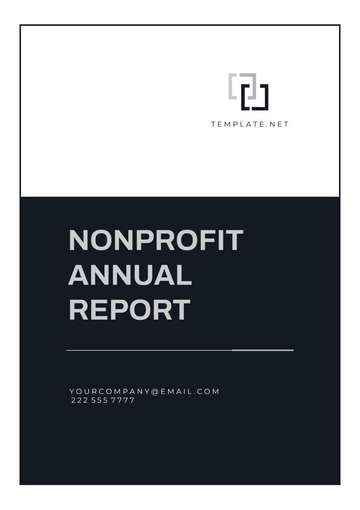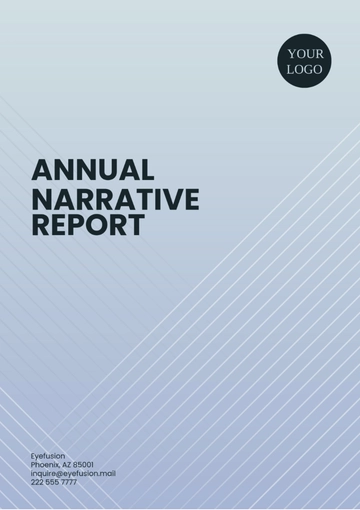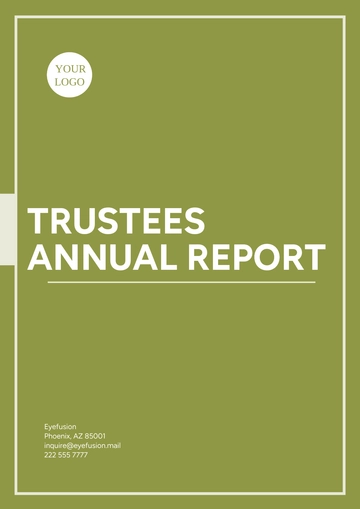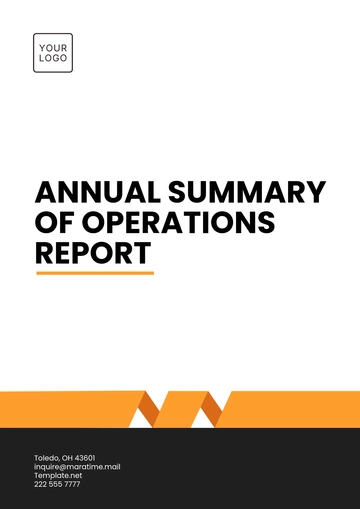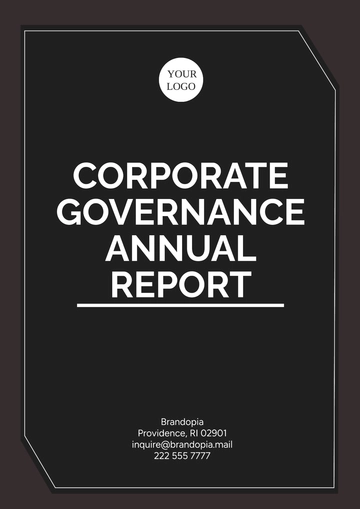Free Advertising Consumer Behavior Annual Report
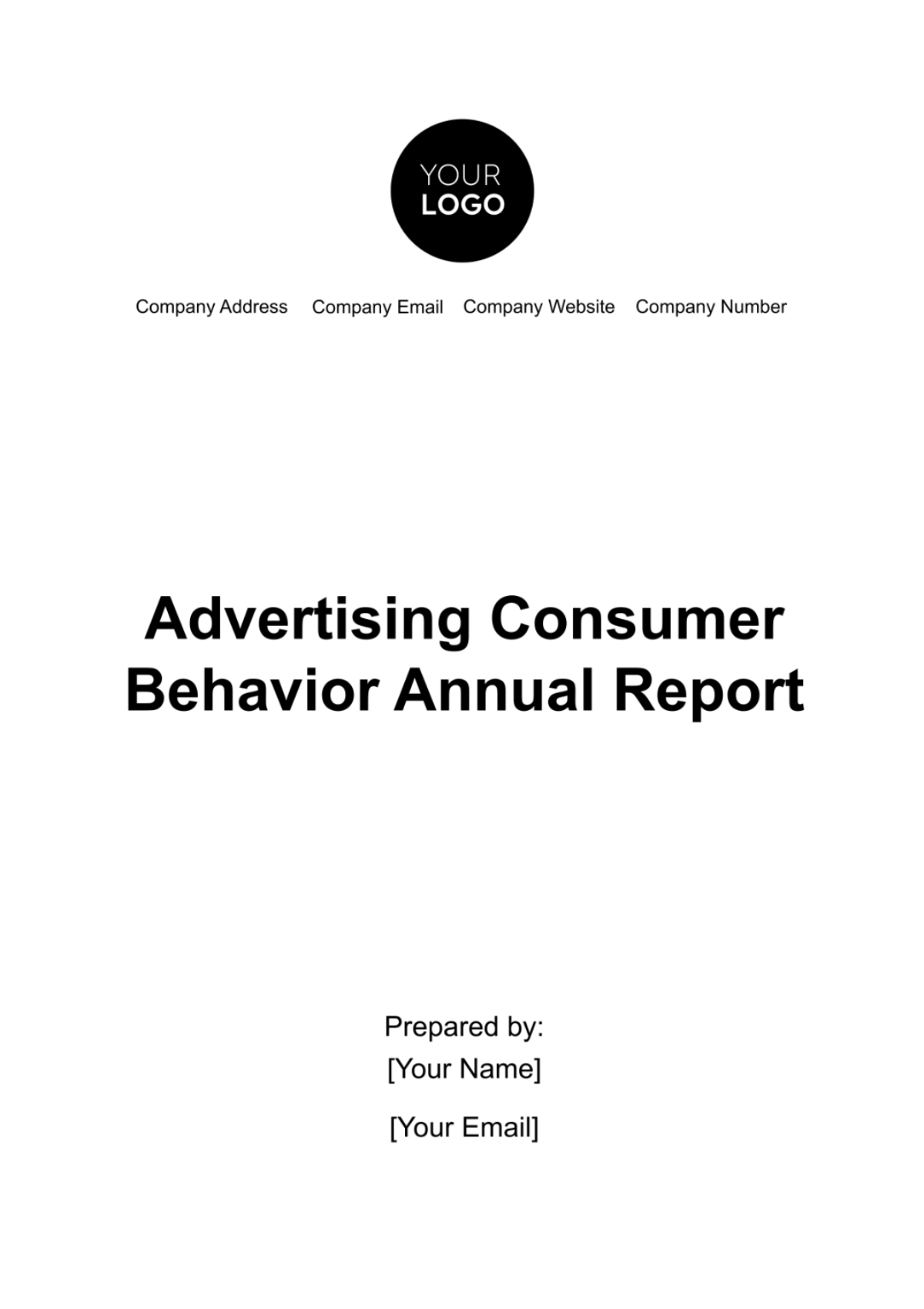
Introduction
In conducting this analysis, [Your Company Name] adopted a robust and multifaceted approach to understand the intricacies of consumer behavior in [20xx]. Our methodology encompasses a blend of both qualitative and quantitative research techniques. Qualitative insights were gathered through in-depth interviews, focus groups, and observational studies, allowing us to explore the nuances of consumer attitudes and motivations. Quantitative data was collected via surveys, digital footprint analysis, including social media interactions and website analytics, and behavioral studies that track consumer responses to different advertising stimuli.
Executive Summary
This report synthesizes the data collected throughout the year, offering a comprehensive overview of current trends and future projections. Key findings reveal a significant shift towards digital integration in consumer experiences, a growing preference for sustainable and eco-friendly products, and an increasing demand for personalized content and offerings.
Consumer Behavior Trends
This section of the report offers an in-depth exploration of the predominant trends influencing consumer decisions and preferences. Understanding these trends is vital for businesses looking to align their strategies with the evolving demands of the modern consumer.
Advanced Digital Integration
The year [20xx] has seen a remarkable surge in the integration of cutting-edge digital technologies into consumer experiences. This trend extends beyond mere online shopping; it encompasses the widespread adoption of augmented reality (AR) and virtual reality (VR) in retail environments, allowing consumers to engage with products in immersive and interactive ways. The use of AI-driven chatbots for personalized customer service and the increasing prevalence of IoT (Internet of Things) devices in everyday life further exemplify this trend. These technologies have not only transformed how consumers interact with brands but also revolutionized their decision-making processes and purchasing behaviors.
Sustainability and Ethical Consumption
Environmental awareness has evolved from a niche concern to a mainstream consumer priority. This shift has sparked a significant change in consumer preferences, with a growing demand for products and services that are eco-friendly, ethically sourced, and sustainable. Brands that demonstrate a commitment to environmental stewardship and social responsibility are increasingly favored by consumers. This trend is also reflected in the rise of 'circular economy' models, where sustainability and resource efficiency are key.
Hyper-Personalization and Predictive Shopping
Personalization has gone beyond traditional customization to embrace hyper-personalization, where consumer experiences are tailored to individual preferences, behaviors, and anticipations. Leveraging advanced AI algorithms and big data analytics, businesses are now able to predict consumer needs and preferences, offering them products and services even before they explicitly express a desire for them. This trend highlights the increasing sophistication of predictive analytics in understanding and anticipating consumer behavior.
Experience-Driven Consumption
Consumers are seeking more than just products; they are looking for memorable and engaging experiences. This trend is evident in the rise of experiential retail, where shopping is intertwined with entertainment, education, and personalization. Brands that can create unique, engaging, and interactive experiences are gaining more traction among consumers, indicating a shift from traditional transactional relationships to more experiential engagements.
Health and Wellness Focus
With a growing consciousness about health and wellness, consumers are increasingly gravitating towards products and services that enhance their well-being. This trend is influencing not just the healthcare sector but is pervading all aspects of consumer goods and services, including food, fitness, leisure, and even home and work environments. Brands that can integrate health and wellness aspects into their offerings are seeing a positive response from health-conscious consumers.
Consumer Engagement Metrics - Year [20xx]
This section provides a detailed analysis of these metrics, offering a clear picture of how consumers have interacted with various digital platforms and products throughout the year. The data reflects the quality and depth of consumer interactions, providing a comprehensive view of consumer behavior.
Metric | Quarter 1 | Quarter 2 |
|---|---|---|
Website Visits | 120,000,000 | 135,000,000 |
Average Session Duration | 5.2 Minutes | 5.5 Minutes |
Social Media Interactions | 2,500,000 | 2,700,000 |
AR/VR Engagement Sessions | 500,000 | 550,000 |
Eco-friendly Product Searches | 1,200,000 | 1,400,000 |
Personalized Product Recommendations | 60% | 65% |
Customer Satisfaction Rating (Out of 10) | 8.2 | 8.4 |
Metric | Quarter 3 | Quarter 4 |
|---|---|---|
Website Visits | 142,000,000 | 150,000,000 |
Average Session Duration | 5.8 Minutes | 6.1 Minutes |
Social Media Interactions | 2,900,000 | 3,200,000 |
AR/VR Engagement Sessions | 600,000 | 650,000 |
Eco-friendly Product Searches | 1,600,000 | 1,800,000 |
Personalized Product Recommendations | 70% | 75% |
Customer Satisfaction Rating (Out of 10) | 8.6 | 8.8 |
YEARLY GROWTH RATE
Analysis
Website Visits and Session Duration
The steady increase in website visits, coupled with longer session durations, signifies the effectiveness of our digital marketing strategies. This growth can be attributed to our targeted content approach, which resonates with consumer interests and preferences. The enhancement in website design, incorporating user-friendly interfaces and interactive elements, further contributed to this increased engagement.
Social Media Interactions
The notable rise in social media interactions is a testament to the success of our dynamic and interactive campaigns. These campaigns, tailored to various consumer segments and leveraging trending topics and formats, significantly increased brand visibility and engagement across multiple platforms. Our focus on creating shareable and relatable content has fostered a strong online community around our brand.
AR/VR Engagement Sessions
The significant growth in AR/VR engagement sessions reflects the consumer's increasing preference for immersive and interactive shopping experiences. Our investment in AR/VR technologies has not only enhanced the online shopping experience but also provided consumers with a unique way to interact with products, thereby deepening their connection with the brand.
Eco-friendly Product Searches
The substantial 50% increase in searches for eco-friendly products is a clear indication of consumers' growing environmental consciousness. This trend aligns with the broader sustainability movement observed in consumer behavior, emphasizing the importance for brands to adopt and promote eco-friendly practices and products.
Personalized Product Recommendations
The marked increase in the acceptance of personalized product recommendations underscores the sophistication and effectiveness of our AI-driven personalization strategies. By analyzing consumer data and behavior patterns, our algorithms have been able to deliver highly relevant and tailored product suggestions, enhancing the shopping experience and customer satisfaction.
Customer Satisfaction Rating
The consistent improvement in customer satisfaction ratings reflects the positive impact of our initiatives aimed at enhancing customer experience and service quality. These initiatives include improved customer support systems, personalized engagement strategies, and a focus on delivering high-quality products and services that meet and exceed customer expectations.
These metrics collectively suggest that [Your Company Name]'s strategies are resonating well with consumers, and they provide a roadmap for further refining our approaches to meet evolving consumer demands.
Strategic Recommendations
In light of the findings from our comprehensive analysis of consumer behavior in [20xx], [Your Company Name] proposes the following strategic recommendations. These recommendations are designed to not align with current consumer trends and also to position the company for future success.
Invest Heavily in Digital Experience Technologies: Given the significant role of digital integration in consumer behavior, we recommend a substantial investment in AR and VR technologies, along with AI-driven interfaces. This will not only enhance the online shopping experience but also provide consumers with innovative and interactive ways to engage with products.
Develop Sustainable and Eco-Friendly Campaigns: Aligning with the trend of environmental consciousness, our advertising strategies should prioritize and highlight sustainable practices and eco-friendly products. This involves collaborating with brands that demonstrate a commitment to sustainability and creating campaigns that effectively communicate these values.
Expand AI-Driven Personalization Techniques: To capitalize on the trend of hyper-personalization, we suggest further developing our AI capabilities for predictive shopping experiences. This includes refining our data analytics tools to offer more precise and anticipatory product recommendations, tailored to individual consumer preferences and behaviors.
Create Experience-Centric Advertising Campaigns: In response to the growing consumer demand for memorable experiences, we recommend designing advertising campaigns that are not just about promoting products but also about creating engaging and interactive experiences. This could involve experiential marketing events, interactive digital content, and immersive brand experiences.
Integrate Health and Wellness into Brand Messaging: Recognizing the increased consumer focus on health and wellness, our advertising should incorporate themes of well-being and healthy lifestyles. This includes partnering with brands that offer health-enhancing products and services and highlighting these aspects in our advertising content.
Enhance Customer Feedback Mechanisms: To continually improve customer satisfaction, we recommend implementing more robust and responsive customer feedback systems. This could include real-time feedback tools, customer satisfaction surveys, and community engagement platforms to gather insights and respond effectively to consumer needs.
Focus on Data Security and Privacy in Advertising: As consumers become more aware of data privacy issues, it is crucial to prioritize data security in all our advertising initiatives. This involves transparent data practices, secure handling of consumer information, and clear communication about data usage policies.
These strategic recommendations aim to leverage the insights gained from our analysis of consumer behavior in [20xx], ensuring that [Your Company Name] remains at the forefront of the advertising industry by adapting to and anticipating the needs and preferences of modern consumers.
Future Outlook and Emerging Trends
As we look towards the future, it's imperative for [Your Company Name] to stay ahead of the curve by identifying and preparing for emerging trends in consumer behavior. This section provides a forward-looking perspective, anticipating changes and innovations that could shape the advertising landscape in the coming years.
Technological Advancements: Advancements in technology, especially in AI, quantum computing, and biometrics, are expected to further transform consumer interactions and expectations. We predict a rise in personalized advertising powered by advanced AI algorithms capable of real-time adaptation to consumer responses.
Evolving Consumer Values: Consumer values are continuously evolving, with a growing emphasis on social justice, inclusivity, and community-driven initiatives. Advertising campaigns that resonate with these values, promote diversity, and foster a sense of community will likely see greater consumer engagement and loyalty.
Environmental and Social Responsibility: The trend towards environmental and social responsibility is expected to intensify. Brands will need to demonstrate genuine commitment to sustainability, not just in their products but also in their operational practices. Green marketing and social responsibility campaigns will become increasingly important.
Shifts in Consumer Lifestyle: The post-pandemic world has led to shifts in consumer lifestyles, with a greater focus on home-centric activities, wellness, and digital connectivity. This shift necessitates a reevaluation of traditional advertising channels and content to better align with these new lifestyle patterns.
The Rise of Virtual and Augmented Realities: As VR and AR technologies become more sophisticated and accessible, their role in advertising is poised to expand significantly. We anticipate a future where virtual stores and augmented product experiences become commonplace, offering consumers new and exciting ways to engage with brands.
Conclusion
By staying attuned to these emerging trends and continuously adapting our strategies, [Your Company Name] can effectively meet the future demands of the advertising market. Our commitment to innovation and responsiveness to consumer behavior changes will be key in maintaining our position as a leader in the industry.
- 100% Customizable, free editor
- Access 1 Million+ Templates, photo’s & graphics
- Download or share as a template
- Click and replace photos, graphics, text, backgrounds
- Resize, crop, AI write & more
- Access advanced editor
Fully understand your audience better with the use of our Advertising Consumer Behavior Annual Report Template! Analyze and document key trends in purchasing patterns, brand perception, and media consumption, making it an essential resource for advertisers seeking to align their strategies with consumer behavior. The template is now editable and customizable using an Ai Editor Tool only at Template.net.
You may also like
- Sales Report
- Daily Report
- Project Report
- Business Report
- Weekly Report
- Incident Report
- Annual Report
- Report Layout
- Report Design
- Progress Report
- Marketing Report
- Company Report
- Monthly Report
- Audit Report
- Status Report
- School Report
- Reports Hr
- Management Report
- Project Status Report
- Handover Report
- Health And Safety Report
- Restaurant Report
- Construction Report
- Research Report
- Evaluation Report
- Investigation Report
- Employee Report
- Advertising Report
- Weekly Status Report
- Project Management Report
- Finance Report
- Service Report
- Technical Report
- Meeting Report
- Quarterly Report
- Inspection Report
- Medical Report
- Test Report
- Summary Report
- Inventory Report
- Valuation Report
- Operations Report
- Payroll Report
- Training Report
- Job Report
- Case Report
- Performance Report
- Board Report
- Internal Audit Report
- Student Report
- Monthly Management Report
- Small Business Report
- Accident Report
- Call Center Report
- Activity Report
- IT and Software Report
- Internship Report
- Visit Report
- Product Report
- Book Report
- Property Report
- Recruitment Report
- University Report
- Event Report
- SEO Report
- Conference Report
- Narrative Report
- Nursing Home Report
- Preschool Report
- Call Report
- Customer Report
- Employee Incident Report
- Accomplishment Report
- Social Media Report
- Work From Home Report
- Security Report
- Damage Report
- Quality Report
- Internal Report
- Nurse Report
- Real Estate Report
- Hotel Report
- Equipment Report
- Credit Report
- Field Report
- Non Profit Report
- Maintenance Report
- News Report
- Survey Report
- Executive Report
- Law Firm Report
- Advertising Agency Report
- Interior Design Report
- Travel Agency Report
- Stock Report
- Salon Report
- Bug Report
- Workplace Report
- Action Report
- Investor Report
- Cleaning Services Report
- Consulting Report
- Freelancer Report
- Site Visit Report
- Trip Report
- Classroom Observation Report
- Vehicle Report
- Final Report
- Software Report
